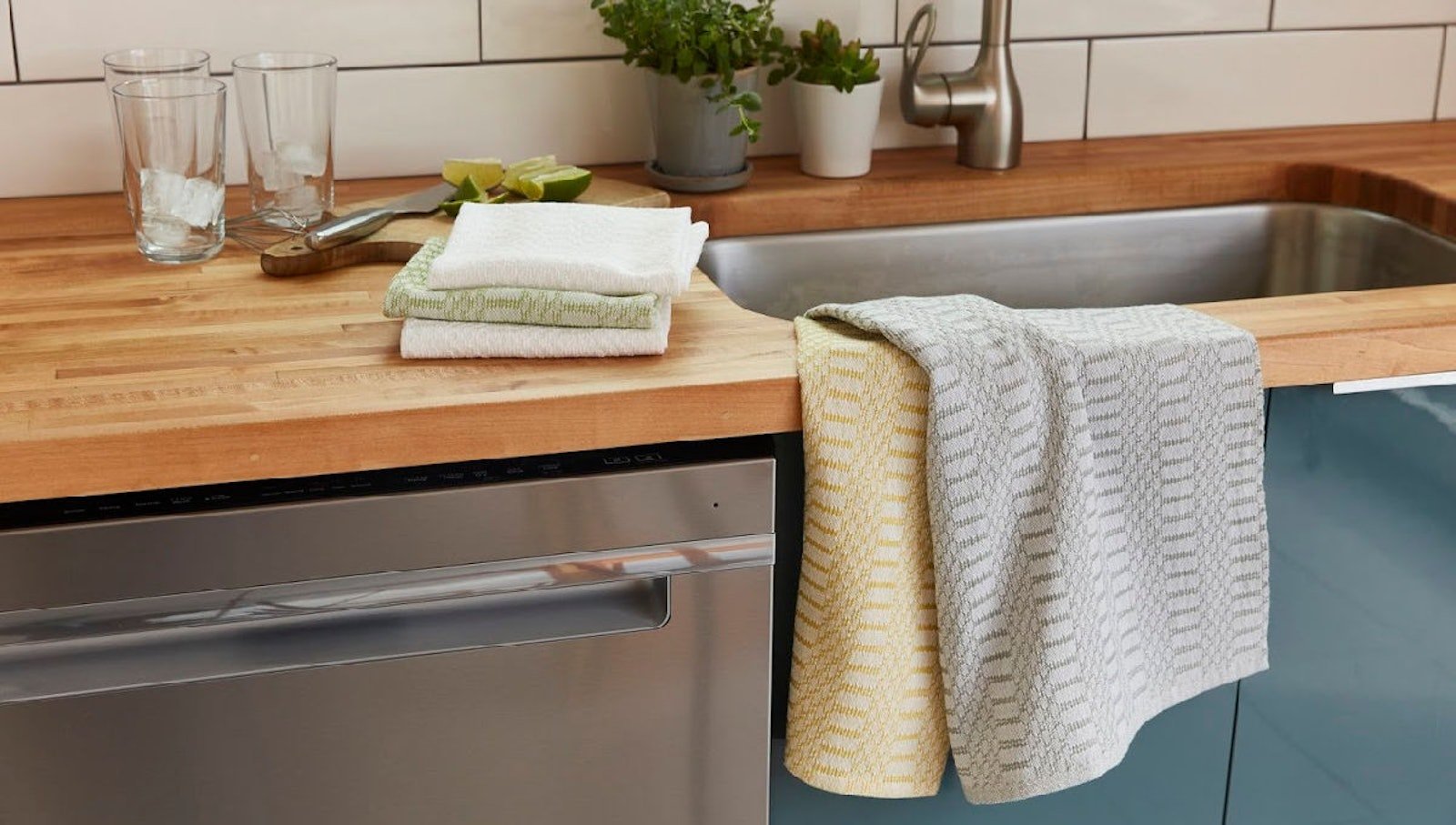There is something so wholesome and so comforting about beautifully woven towels. Such towels do not need to be overly complex—a simple weave combined with a classic color palette is all you need to create towels that are pretty-much perfect. If you want to know what I mean, look no further than Susan E. Horton’s Sweet Simplicity Towels from the March/April 2019 issue of Handwoven. Weave up a set of these towels and put them in a bread basket with fresh sourdough slices or hang them in your kitchen and simply admire them. Here’s what Susan had to say about her design:
Susan E. Horton’s Sweet Simplicity Towels are everything you want in a towel and beautiful to boot. Photo credit: George Boe
Designer Susan E. Horton’s Statement
The North Andover Historical Society started what would become the American Textile Museum in 1960, basing it on a collection of spinning and weaving equipment that Caroline Stevens Rogers inherited from her father, Samuel Dale Stevens. In 1984, the name was changed from the Merrimack Valley Textile Museum to the Museum of American Textile History to reflect its broader scope. In 1997, the museum’s name changed again to the American Textile History Museum, and it moved to Lowell, Massachusetts. In June 2016, the museum closed permanently due to budget deficits.
For me, the closing was a big loss, not only for the weaving and spinning communities but also for the nation as a whole. I visited the American Textile History Museum twice and was intrigued by the stories told about the textile industry in the United States. As a weaver, seeing the large looms and hearing the stories about the people who operated them gave me a sense of belonging to a part of history.
The first time I went, I purchased a kitchen towel that had been woven on a museum loom. At the time, it seemed like a complex lace, but after looking at it for a bit, I realized it was a simple M’s and O’s pattern with matching warp and weft.
For this project, I wanted to honor the museum by imitating the towel while altering it to fit my own criteria. Although I often weave towels using 8/2 cotton, I find they are a bit heavy for drying glassware, so I chose natural 16/2 cotton for a daintier towel and picked some light colors for weft.
Although the purchased towel was clearly cut from yardage, as it was hemmed on all four sides, I designed my towels to have tidy selvedges. After I wove a couple, I decided to exercise another option available to weavers and added a pseudo plain-weave border to the last three. I wove two using the same color as the warp, and for the other three, I used muted gray, gold, and green. I like the colors but, in the end, prefer the slightly different hand of the all-natural towels and their sweet simplicity.
Happy Weaving!
Christina
Project at a Glance
PROJECT TYPE: 4-shaft.
STRUCTURE: M’s and O’s.
EQUIPMENT: 4-shaft loom, 20" weaving width; 12-dent reed; 1 shuttle; 2 bobbins.
YARNS: 16/2 unmercerized cotton (6,720 yd/lb; Bockens; Eugene Textile Center).


